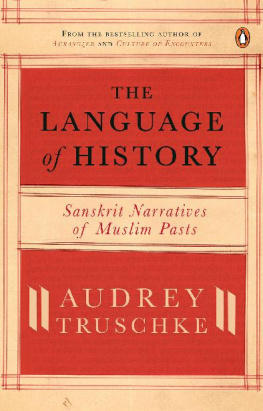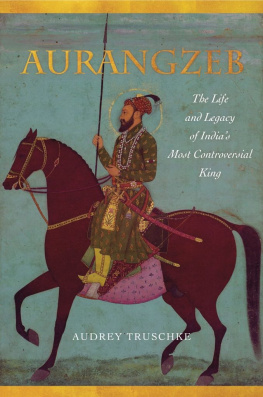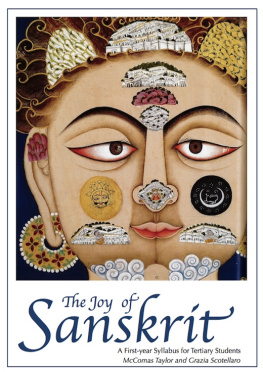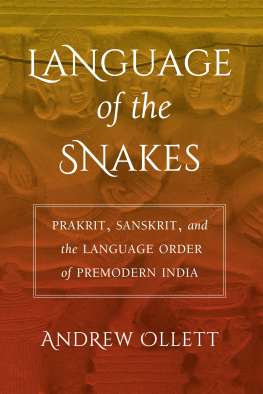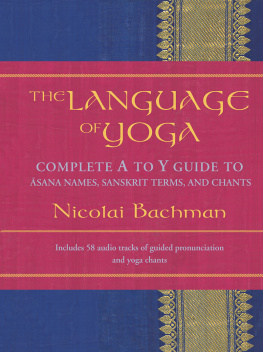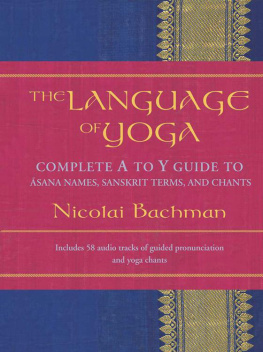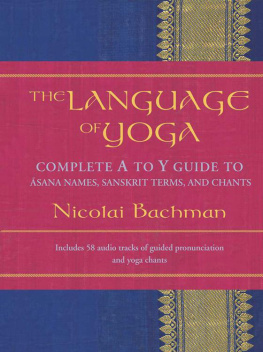AUDREY TRUSCHKE
THE LANGUAGE OF HISTORY
Sanskrit Narratives of Muslim Pasts
Contents
Also by the Author
Culture of Encounters: Sanskrit at the Mughal Court
Aurangzeb: The Man and the Myth
For Allison Busch,
a mentor, role model, inspiration and friend, always
Speak, the truth is still alive;
Speak: say what you have to say.
Faiz Ahmad Faiz, translated
by Yasmin Hosain
List of Images
. Adhai-din-ka-Jhompra mosque, Ajmer, Rajasthan, photo by author, 2007
. Two-faced rider, Kalyana Mandapa, Varadaraja temple, Kanchipuram, photo by author, 2019, clean-shaven view
. Two-faced rider, Kalyana Mandapa, Varadaraja temple, Kanchipuram, photo by author, 2019, moustached view
. Goripalayam Dargah, Madurai, site of two graves of the sultans of Madurai, photo by author, 2019
. Thiruparankundram Dargah, outside of Madurai, site of the grave of Sultan Alauddin Sikandar Shah, the last sultan of Madurai, external view, photo by author, 2019
. Thiruparankundram Dargah, outside of Madurai, site of the grave of Sultan Alauddin Sikandar Shah, the last sultan of Madurai, internal view, photo by author, 2019
. Wall of Ranthambhor Fort, Rajasthan, photo by author, 2019
. Surjan of Hada submitting to Akbar, Akbarnama , circa 159095, Victoria and Albert Museum, London, IS.2:75-1896
. Burning of the Rajput women during the siege of Chittor, Akbarnama , circa 159095, Victoria and Albert Museum, London, IS.2:69-1896
List of Tables
Sanskrit Inscriptions that Mention Historical Encounters with Muslims, Pre-1000
Jain Prabandhas that Refer to Muslim Political Figures, 130549
Kashmiri Rajataranginis (Rivers of Kings) in Premodernity
Individual Biographies Featuring Jain Activities at the Mughal Court, 15891652
Sanskrit Histories Sponsored by the Maratha Bhonsle Family, 167390
Sanskrit-language Mughal Political Histories
Timelines of the Establishment of Mughal Power
Preface and Acknowledgements
I argue in this book that a hitherto unrecognized archive, Sanskrit histories of Indo-Muslim rule, ought to be acknowledged as crucial to the study of Indo-Persian political history and Sanskrit intellectual culture in the second millennium CE . Among other things, I highlight the variety of views held by premodern Indias traditional learned elite of the Muslim Other (most often depicted as not particularly Muslim and, often, as not particularly Other). I also demonstrate some analytical approaches for how to navigate the literary aspects of writing about political pasts that are compelling for the study of South Asia and beyond. Some premoderns wrote history as poetry and, I argue, the texts that they produced might prompt us to think in dynamic ways about the definition and practice of history today.
Both the texts and political events that I resurrect here unfolded in the past, primarily between 1191 and 1721 CE . But the telling of this past occurs in the twenty-first century. The narrative as I have crafted it is a modern phenomenon. One of my core arguments in this book is that storytelling, albeit truthful storytelling, is a critical and still underappreciated dimension of the historians craft. And so let me begin with part of my story, namely, how I came to write this book and how I benefited from the generosity and skills of many colleagues and institutions along the way.
I began work on this project a number of years ago, but then put it on the back burner because I was interrupted by Aurangzeb Alamgir. The sixth Mughal emperor has been dead for more than three centuries, but he has commanded an immense amount of attention in recent times. In my case, the interruption consumed several years as I researched, wrote and dealt with the aftermath of having produced a historical biography of Aurangzeb, Indias most hated king. Along the path of writing Aurangzeb: The Man and the Myth (Penguin Random House India, 2017), I developed new skills and sensitivities as a historian. Most relevant here is that writing Aurangzeb and living through its reception brought home to me, in visceral, immediate and sometimes terrifying ways how the past lives in the present. As a result, I embarked on my next book project (resulting in this monograph) highly attuned to questions of narrative, the nuances of identities and the emotions often wrapped up in how many people interpret the Indian past. I think I am a better historian for this set of experiences, painful as some of them were, and I hope that, as a result, this is a better book than it might otherwise have been.
In researching and writing this book, I acquired many debts of gratitude. I am thankful to the numerous colleagues who commented on chapters, batted around ideas at various stages and made interventions in this project. I could not have written this book without you. That said, all views and errors in this book are my own.
Note on Translations and Scholarly Conventions
I forgo diacritics for the names of people (including authors), places and Indian-origin terms now part of English. But I retain them for titles of texts and transliterations of phrases, usually from Sanskrit, out of dedication to textual fidelity and accuracy. For individual terms, I generally provide diacritics upon first use, and thereafter I omit both diacritics and italics. I make some exceptions and repeat diacritics when I am discussing the linguistic origins or meanings of specific terms. Readers can find a glossary of non-English (and newly English) terms at the end of the book. This is an imperfect set of compromises that attempts to reconcile two scholarly commitmentsprecision and accessibilitythat I hold equally dear.
For Sanskrit diacritics, we have an established system that all specialists will recognize. Persian is another story. Here, I use the IJMES transliteration system with some modifications. I shorten al- to approximate pronunciation where appropriate. Citations refer to page numbers unless otherwise marked; I cite some Sanskrit texts using book, chapter and verse numbers, in accordance with convention (e.g., Mahbhrata 12.200.4041). Sometimes, in pursuit of clarity, I give both page and verse numbers.
In this book, I translate a wide variety of Sanskrit texts, inscriptions and poetry. In so doing, I strive to be faithful to the meaning, sense and poetry of the original texts. Sanskrit poetry has long suffered from bad translators. In recent decades, many modern Sanskritists have favoured overly literal translations that metamorphose refined Sanskrit verses into clunkysometimes nearly unintelligibleEnglish. I avoid that failed approach here. Instead I strive to create readable, even appealing, English renderings that at least nod at the aesthetic beauty of the Sanskrit original. I also prioritize clarity, which sometimes means that I move around clauses and repeat words, especially names. I do not shy away from idiomatic translations when I feel that they capture something important about the original Sanskrit poetry.
I invite readers to be critical of my translations (and of everything else that I write in this book). I also caution that looking up every word in a dictionary and tossing in minimal English grammar, without a thought to aesthetics in the target language, often comes closer to mutilating the original text rather than the art of translation.




